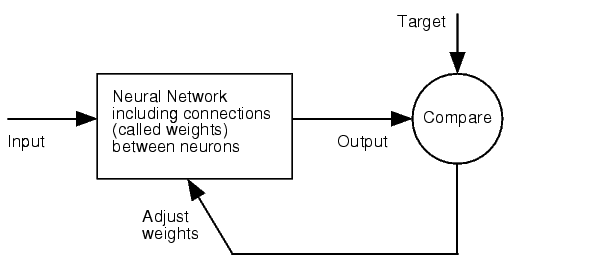Team:Heidelberg/Modeling
From 2010.igem.org
(Difference between revisions)
(→Neural Network theory) |
(→Neural Network Model) |
||
| Line 17: | Line 17: | ||
Figure 1: Normally Neural Networks are trained so that a particular input leads to a specific target output. | Figure 1: Normally Neural Networks are trained so that a particular input leads to a specific target output. | ||
Neural networks have been trained to perform complex functions in various fields, including pattern recognition, identification, classification, speech, vision, and control systems. | Neural networks have been trained to perform complex functions in various fields, including pattern recognition, identification, classification, speech, vision, and control systems. | ||
| + | ====Model description==== | ||
| + | |||
| + | The NN model has been created with the MATLAB NN-toolbox. The input/target pairs used to train the network comprise experimental and literature data (Bartel et al. 2007). The experimental data were obtained by measuring via luciferase assay the strength of knockdown due to the interaction between the shRNA and the binding site situated on the 3’UTR of luciferase gene. Nearly 30 different rational designed binding sites were tested and the respective knockdown strength calculated with the following formula->(formula anyone???). | ||
| + | ====Input/target pairs==== | ||
| + | Each input was a four elements vector and each element corresponded to a score value referred to a specific feature of the binding site. The features used to describe the binding site were: seed type, the 3’pairing contribution the AU-content and the number of binding site. Each input was paired to the percentage of knockdown related to that particular binding site (target). | ||
| + | Once the network was trained than it was used to predict percentages of knockdown given certain inputs. The predictions were then validated experimentally. | ||
| + | ====Characteristic of the Network==== | ||
===Fuzzy Inference Model=== | ===Fuzzy Inference Model=== | ||
Revision as of 00:20, 25 October 2010

 "
"



